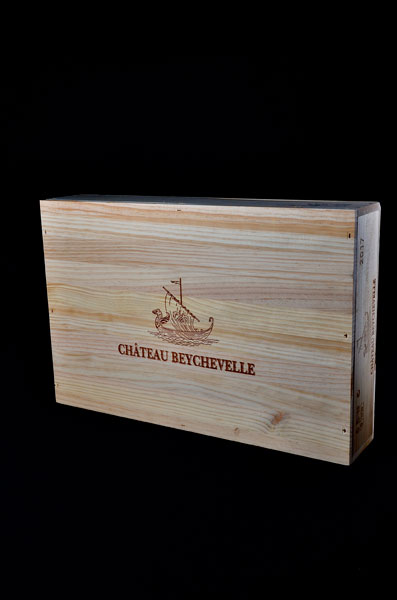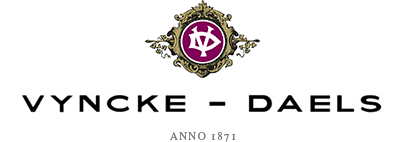2017 Beychevelle is een verrassing van formaat. Zonder vorstschade kon de vroege vegetatieve cyclus worden verdergezet en een spectaculair rendement van 54hl/ha bereikt worden (voor de selectie, waarbij er dit jaar veel tweede wijn is). Het assemblage bestaat uit 50% Cabernet Sauvignon, 45% Merlot, 1% Cabernet Franc en 4% Petit Verdot. De élevage zal gebeuren in 60% nieuwe eik. De neus is op en top bordelees en bijzonder innemend. De attaque is supersensueel en en de precieze milieu de bouche kan zijn oorsprong op de oevers van de Gironde niet loochenen. Dit is zonder meer een excellente Beychevelle en een ware Lolita van een verschijning. Toffe wijn met een prachtige textuur en gepolijste tannine die een kern van cassis verheerlijken! U zal vrij vroeg kunnen genieten van deze toegankelijke Saint Julien met al dit prachtig floraal, sappig en zuiver fruit.
Het is pas het tweede miillésime dat gemaakt wordt in de nieuwe cuvier, die uiteraard state of the art is. De prijs is gezapig, de kwaliteit onberispelijk en the Dragon Boat wine is uiterst populair op de Chinese markt.
IN DE PERS
92 Neal Martin – vinous.com (Februari 2020)
The 2017 Beychevelle was, atypically for the vintage, quite ostentatious from barrel. Not in bottle! It has retained an atypical rich and generous bouquet that you could almost mistake for the following vintage with scents of red cherries, boysenberry, hints of crème de cassis and violet. The palate is medium-bodied with supple tannins and fine acidity. It feels a little compact at the moment although I admire its focus. Picking at straws, it just feels abrupt on the finish, scrapers out of the exit door a bit too hastily. As such, this is a good Beychevelle, but not one of the best in recent years. Tasted twice with consistent notes. Drink 2022-2040.
90-92 Neal Martin – vinous.com (Mei 2018)
The 2017 Beychevelle was cropped at 54hl/ha between 18 September and 3 October, matured in around 60% new oak with 13.4° alcohol. It has a very ripe blueberry, almost iodine-scented bouquet that is much more extroverted than its peers (like the 2016 last year.) The palate is medium-bodied with sweet black cherry and boysenberry fruit, and plenty of crushed violet. The palate is ripe and succulent; a sweet core of blue and black fruit here although perhaps its neighbor across the road, Branaire Ducru, displays a little more terroir at this early stage. Maybe that is because of the saignée? I would just like to see a little more restraint come through in bottle while I noticed greater precision developing during the 30 minutes the sample spent in my glass. Drink 2021-2040.
95 Antonio Galloni – vinous.com (Maart 2020)
The 2017 Beychevelle is a luscious, extroverted beauty. An exotic mélange of super-ripe dark cherry, red plum, pomegranate, espresso, licorice and blood orange build as this potent, unctuous Saint-Julien opens up in the glass. The tannins need time to soften but should not be much of an issue in another few years' time. I very much like the push and pull of ripeness and energy in the 2017. In a word: memorable. Tasted two times. Drink 2025-2047.
92-95 Antonio Galloni – vinous.com (Mei 2018)
The 2017 Beychevelle is absolutely gorgeous. Creamy and beautifully layered on the palate, Beychevelle exudes exotic richness in its ripe red/purplish berry fruit. Even though the 2017 is rather flamboyant in style, it retains quite a bit of brightness to play off its more extroverted leanings. Beychevelle was impressive on the several times I tasted it.
92 Jane Anson – decanter.com (April 2018)
This is a fine expression of St-Julien, with extremely pretty aromatics and brambly, juicy black fruits that remain soft and persistent through the palate, with the tiniest hint of acidity tightening the tannins. It's not as expressive as in 2016, but that was exceptional, though this is certainly a wine to recommend in 2017. Drink 2026-2040.
94+ Lisa Perrotti-Brown MW – robertparker.com (Maart 2020)
Medium to deep garnet-purple in color, the 2017 Beychevelle has a fragrant, floral nose with warm cassis, preserved plums and Morello cherries plus earth, herbs and cinnamon touches. Medium-bodied, it has lovely expression with firm, fine grained tannins and seamless freshness, finishing long and mineral laced. The wine was aged for 18 months in French oak, 60% new and 40% second fill. The final blend is 50% Cabernet Sauvignon, 45% Merlot, 4% Petit Verdot and 1% Cabernet Franc. Fifty-two percent of the production was dedicated to the grand vin, with 240,000 bottles produced. Drink 2022-2042.
90-92 Lisa Perrotti-Brown MW – robertparker.com (April 2018)
Deep garnet-purple colored, the 2017 Beychevelle opens with gregarious cassis and blackberry pie notes with touches of baking spices and underbrush plus a waft of lavender. Medium-bodied with a great core of ripe black fruits, it has a firm frame of ripe, grainy tannins and balancing freshness, finishing long. The final blend is 50% Cabernet Sauvignon, 45% Merlot, 4 Petit Verdot and 1% Cabernet Franc.
93-94 James Suckling – jamessuckling.com (Maart 2018)
Very fine tannins already with a solid core of blackberry and blueberry character. Hints of flowers. Full-bodied, well-integrated and tight, not to mention fresh and long.
16,5/20 Julia Harding MW – jancisrobinson.com (April 2018)
Deep crimson with purple rim. Tangy, slightly wild black fruit, more bramble than cassis. Smooth, rounded and rather gentle but still persistent. Supple tannins already, though they may be deceptive.
92-94 Jeb Dunnuck – jebdunnuck.com (April 2018)
Only 52% of the production went into the 2017 Château Beychevelle (they normally shoot for 60%), and the blend is 50% Cabernet Sauvignon, 45% Merlot and the rest Petit Verdot and Cabernet Franc that’s still aging in 60% new oak. This inky purple-colored beauty gives up loads of blue fruits, black cherries, underbrush, and a touch of minerality in a medium to full-bodied, pretty, elegant package that’s very much in the style of the vintage. This estate has been on a serious roll lately, and the 2017 isn’t going to break the trend. Tasted twice.
91 Jean-Marc Quarin – quarin.fr (April 2018)
90-93 James Molesworth – winespectator.com (Maart 2018)
16-17/20 Revue des Vins de France – rvf.com (April 2018)
93-95 Roger Voss – wineenthusiast.com (April 2018)
BeychevelleDe kwaliteitssprong is een feit. Beychevelle was altijd al gekend voor souplesse (met minder Cabernet Sauvignon in assemblage), maar blinkt hij nu ook “academisch” uit. Het terroir van Graves is beplant met 47% Cabernet Sauvignon, 46% Merlot, 4% Cabernet Franc en 3% Petit Verdot tegen 9.000 wijnstokken per hectare die gemiddeld 35 jaar oud zijn. De vinificatie gebeurt parcellair in de nieuwe cuverie met conische inox cuves (sinds 2016), waar geen pomp meer aan te pas komt. Romain Ducolomb kwam over van Clinet als technisch directeur. Samen met Philippe Blanc verricht hij wonderen. Eric Boissenot is de oenoloog. Suntory en Pierre Castel zijn elk voor de helft eigenaar. Het wereldberoemd etiket met de drakar is iconisch. Chinezen kennen Beychevelle als de “dragon boat wine” en zijn er tuk op.
Château Beychevelle est un prestigieux Cru Classé à l’âme forgée par trois siècles d’histoire. Sous Henri II, Beychevelle fut le fief des ducs d’Epernon. Le premier d’entre eux, Jean-Louis Nogaret de La Valette, grand amiral de France, est à l’origine du nom du Domaine. Selon la légende, les navires passant devant son château devaient baisser leurs voiles en signe d’allégeance, d’où le nom de Beychevelle : baisse voile. Edifié en 1757, le château Beychevelle figure toujours parmi les fleurons du Bordelais. L’élégance de son architecture se reflète dans ses vins, résultat d’une recherche constante de l’équilibre entre puissance et raffinement. La politique de respect de l’environnement et de la santé humaine menée depuis plusieurs années lui a valu dès 2005 une qualification au titre de « l’Agriculture Raisonnée » et une attestation de conformité au cahier des charges «Terra Vitis ».
| |


